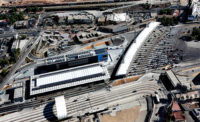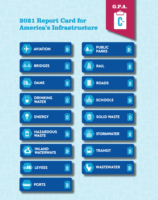
After a funding lull, U.S. General Services Administration appropriations are bouncing back for "land ports of entry" projects.
In the newly enacted spending bill for the rest of fiscal year 2015, GSA's account allotment for its new-construction includes $216.8 million for the San Ysidro project and $98.1 million for a port in Calexico, Calif. Those were the amounts GSA had requested in its budget submission. Combined, the allocations for the two projects account for 62% of GSA's total for the construction account.
In 2014, San Ysidro received $226 million in new or reprogrammed funding, and a Laredo, Texas, land port got $61.8 million, making the land ports' share 30% of last year's new-construction allotment.
This year, Congress didn't give GSA all its requested land-port money. The agency sought $105.6 million for a port at Alexandria Bay, N.Y., but received no funding from Congress for that project.
Jimmy Christianson, Associated General Contractors of America director of government affairs for federal and heavy construction, says, "Just looking at the pure numbers, that would indicate [land ports] seem to be a priority for Congress." He adds, "It just seems like this is another way to strengthen the border."
Border security and increased freight traffic are helping to drive the need to replace or upgrade aging border facilities. Michael Gelber, deputy commissioner of GSA's Public Buildings Service, told a House subcommittee hearing in July that, over the past 15 years, GSA has delivered more than 20 new land ports at a cost of $1.5 billion.
Land, sea and air ports of entry are important for border security. The Dept. of Homeland Security reported on Dec. 19 that officers at ports of entry stopped 223,712 inadmissible aliens from entering the U.S. in fiscal 2014, up 9% from 2013.
Expanded land ports also help to speed the flow of increased transborder freight. Gelber said that, since 1990, the value of two-way U.S.-Mexico and U.S.-Canada trade has climbed 170%. The North American Free Trade Agreement, which went into force Jan. 1, 1994, has been a prime catalyst for the jump.




Post a comment to this article
Report Abusive Comment